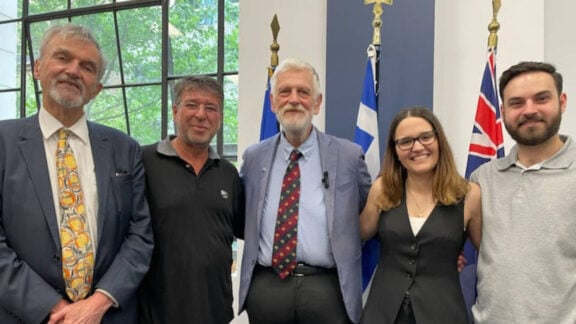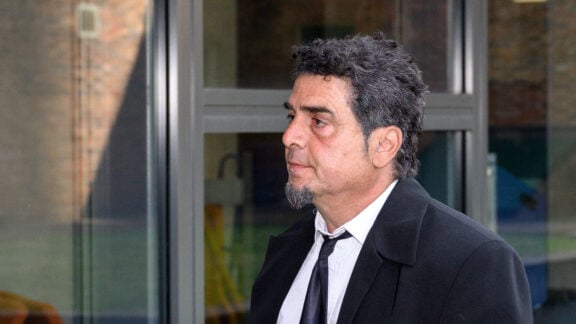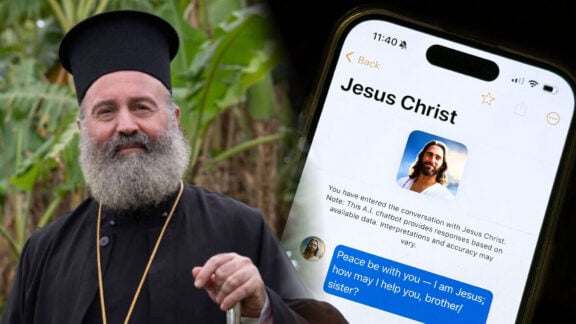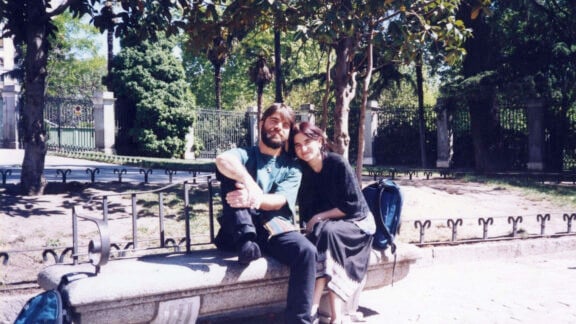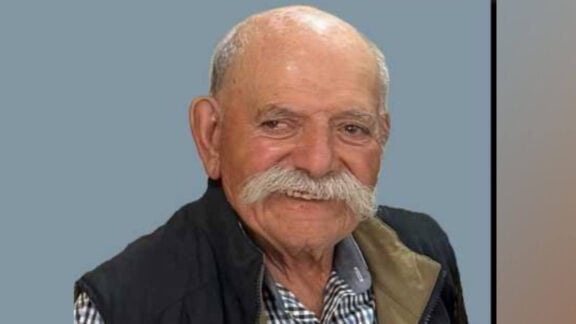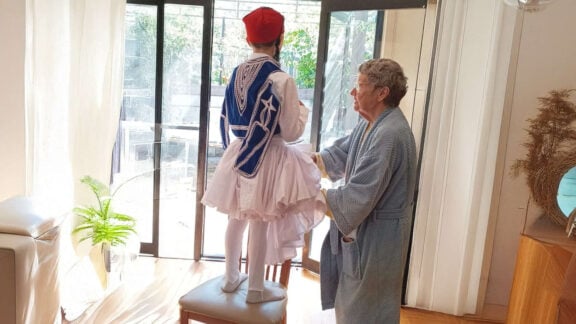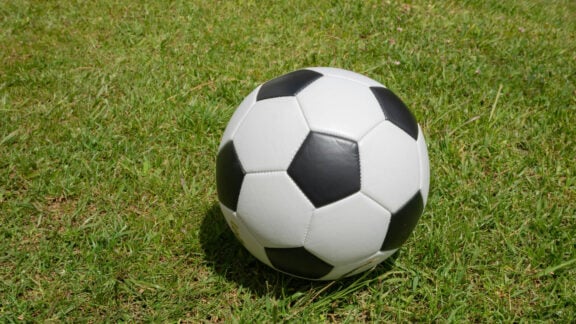The Encyclopedia of Socceroos is a landmark publication that has been over 25 years in the making. Compiled by notable football statistician Andrew Howe, it brings together for the first time all the facets of the Socceroos’ history.
Since 1922, over 900 footballers have played for the Socceroos, and while compiling the book Howe uncovered the story of 23-year-old Giorgos Vlahos who played for Australia in 1937.
Giorgos Vlahos changed his name to George Sheppard soon after arriving in Australia from Greece. He was a goalkeeper who stood at 5ft 10in (1.78m) and weighed 11 stone (70kg). He played for the Victorian state team and South Melbourne United in the 1930s.

Howe told Neos Kosmos that uncovering Vlahos’ story was one of the most thrilling aspects of putting together the encyclopedia.
“I do like exploring players by ethnic background,” he says. “In the 1920s and 30s three-quarters of the Australian team were Australian-born and almost all of the non-Australian born were English and Scottish.
“It was very rare, right up until the 50s, for a player not born in Australia or the United Kingdom to play for Australia. We think of post-WWII migration including many Italians, Greeks and people from the former Yugoslavia, but there wasn’t much migration from those countries before the war, so to discover that there was a Greek-born player who ended up playing for Australia, yes, I loved it. I loved that discovery.”
Not very much is known of Sheppard, but Howe discovered that he played only one game for the Australian national team in 1937 v England Amateurs. When he played for South Melbourne United in the 1930s it wasn’t a Greek-backed club. Years later United would merge with two other clubs to form what would become modern-day South.
Current South Melbourne president Leo Athanasakis told Neos Kosmos that the club was delighted to know of Sheppard’s association with the club.
“There have been 52 Socceroos that have come through the club since 1959 but we didn’t have much [on] record [about] the South Melbourne United component,” he says.
“We are extremely honoured and proud to have the first Greek Socceroo George Sheppard in 1937 who symbolises what the club is today. You can reflect on George Sheppard’s experience to Ange Postecoglou as a migrant coming to this country and becoming the first Greek-born Australian coach.
“So, to have the first Greek immigrant to play for Australia is unique. It shows how far our club dates back as a football entity and the early contribution to Australian football.”

Howe’s book includes a mini-biography for each of the 592 Socceroos who played in competitive games known as ‘A’ international fixtures. Sheppard appears in the list of 314 additional players who also featured for Australia but these games were not recorded as ‘A’ internationals.
After Sheppard, there was a 41-year wait until South Melbourne’s Kris Kalifatidis became the first Greek Australian to play an ‘A’ international game when he ran out against Greece on 11 June 1978 in Melbourne.
Fellow South player George Christopoulos also played in that game and became the second youngest Australian debutant at 17 years old and 182 days. Coincidently, Duncan Cummings who was the youngest ever Socceroo in 1975 when he just turned 17, moved to South Melbourne the following year.
Howe’s book is being launched at events all over Australia, and South Melbourne will host the Victorian leg on Tuesday 29 May.
Athanasakis says he is proud to have their history acknowledged in Howe’s encyclopedia.
“It’s only apt that the launch will be at our social club where our museum, our history and our football is on display,” he says.
“There you can see the images of Kris Kalifatidis and George Christopoulos who played integral roles in the Championship winning years in the 1970s in the State League and made massive contributions to the 1977 team that took part in the first year of the National Soccer League.”
The Greek Australian record holders associated with the Socceroos does not end there. Howe’s encyclopedia shows that in 1981 former Sydney Olympic player Peter Raskopoulos became the youngest captain of the Socceroos at 19 years and 189 days when he played against Indonesia.
Raskopoulos went on to play 35 games for Australia and told Neos Kosmos that he was humbled by the recognition of his time with the national team.
“It’s always nice to be acknowledged for the work that you do and achievements that you made, and it makes the family proud,” he says.
“Playing for Australia is an achievement that I was proud of and captaining my country is something that I’m proud of. It’s a nice way to be recognised in history.”
Along with Raskopoulos, 13 Greek Australians played for the Socceroos in the 1980s and it was an era the former captain looks back on fondly.
“It was a fantastic period of time,” he says. “You had the Melbourne players like Ange Postecoglou, Theo Selemidis, George Christopoulos. At Sydney Olympic we had a lot of Greek internationals from Tony Spyridakos, Jim Patikas, Chris Kalantzis and Peter Katholos and all these guys that represented Australia were all excellent players.”
Jim Patikas also played alongside Raskopoulos against Indonesia in October 1981 and became the fifth youngest Socceroos debutant. In March 1988 while playing for Greek club AEK he became the first European based player to play for the Socceroos and he told Neos Kosmos those times were precious.
“They are just great memories,” he says. “I was 17 and it was a proud moment. We always talk about those experiences. It’s what every parent now is dreaming about for their kids and that group achieved it. We still have laughs and tell stories about the trips to Mexico and America. The saying what you do in Vegas stays in Vegas, well what you did in the Australian squad stays in the Australian squad.”
Another impressive record involving Greek clubs is when Heidelberg had eight players from the club chosen to represent Australia in a friendly international against AC Milan in May 1980. No other club has had that many players play for an Australian team.
The encyclopedia also shows that South Melbourne has the second highest proportion of player appearances in ‘A’ international games and Howe says the influence of Greek-backed clubs is recognised in the book.

“What I’ve also got in the book is a top 10 list of clubs with the most appearances for the Socceroos in ‘A’ international games,” he says.
“Number one is Marconi with 5.2 per cent and number two is South Melbourne with 5 per cent, while number seven is Sydney Olympic. So, you have two of the big Greek Australian clubs there in the top 10 in terms of Socceroos playing for them at the time.
“The big clubs back in the 60s and 70 were Sydney Olympic/Pan-Hellenic and South Melbourne. Then you have West Adelaide who won the second national league title in 1978. They were always up there in terms of the big crowds and they were obviously the clubs that gave players opportunities.”
Howe added, “Through the 80s and 90s, Sydney Olympic and South Melbourne both won titles and contributed a lot to the national team. Including players from Greek backgrounds and lots and lots of players from non-Greek backgrounds. It certainly wasn’t exclusive to Greek Australians.”
* Encyclopedia of Socceroos launches on Tuesday 29 May at 5.30 pm at South Melbourne Football Club (31/36 Aughtie Dr, Albert Park VIC).
To book your free place at the Melbourne launch, or to find out about upcoming launches in Newcastle, Brisbane, Adelaide and Canberra, visit airplaypublishing.com.au/product-page/encyclopedia-of-socceroos

